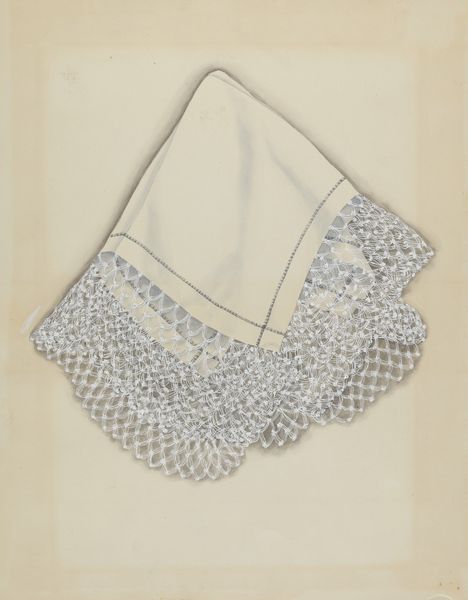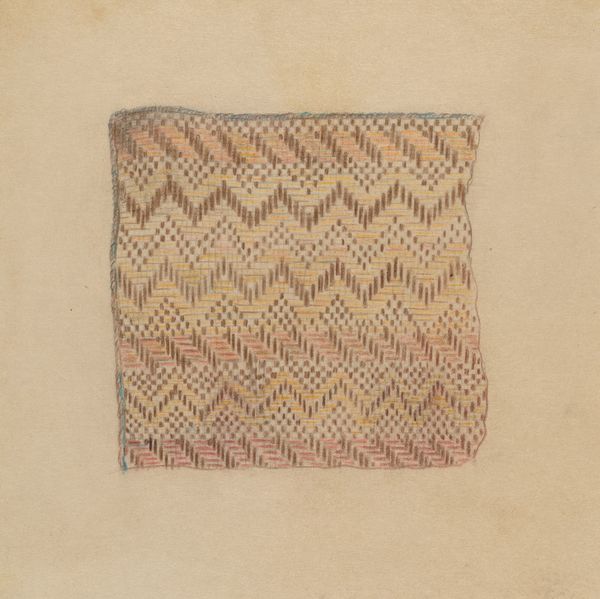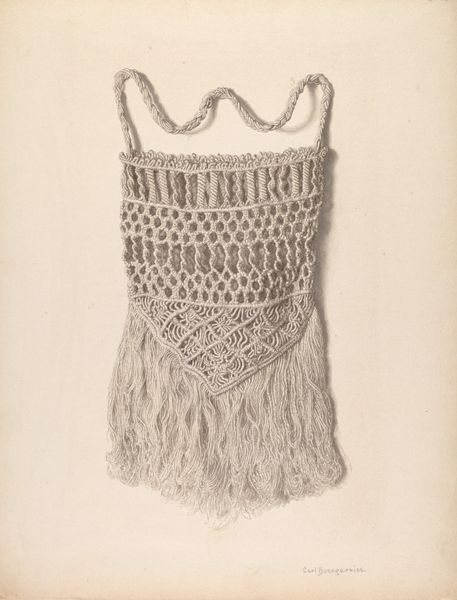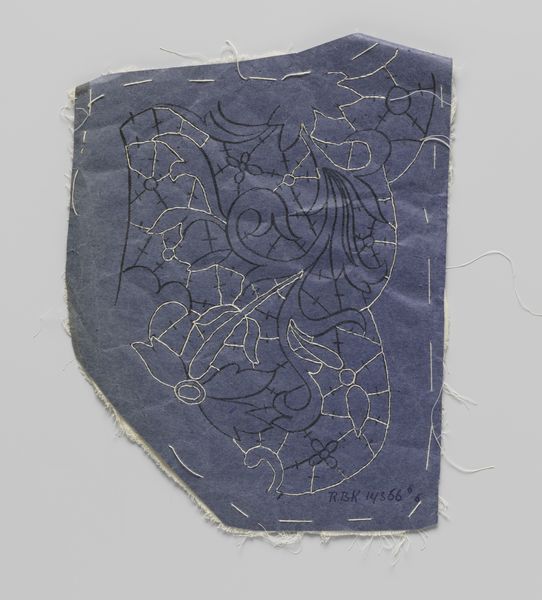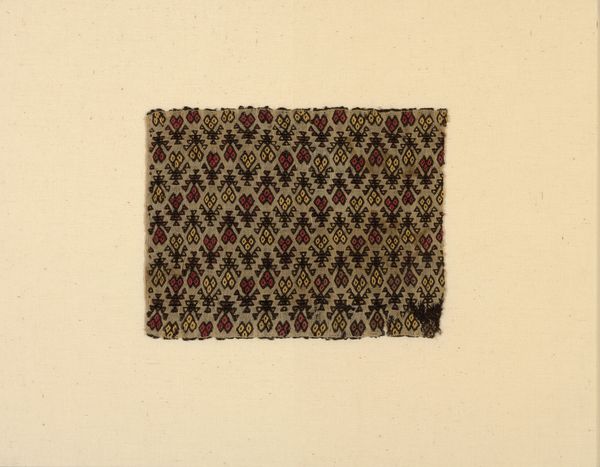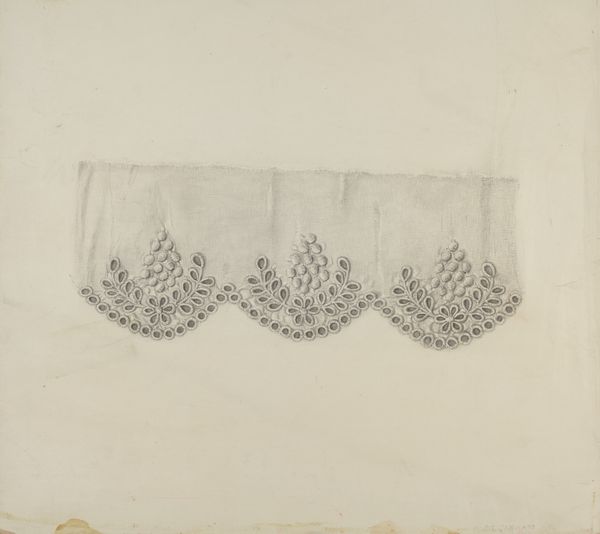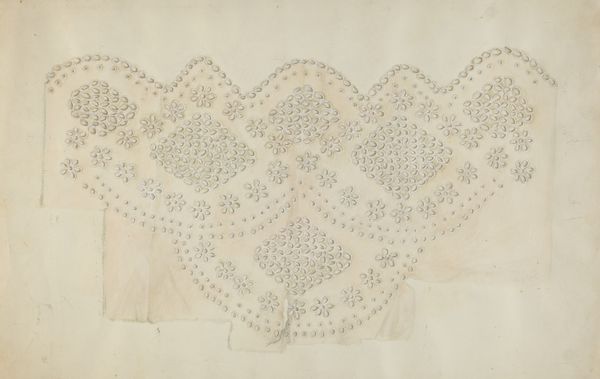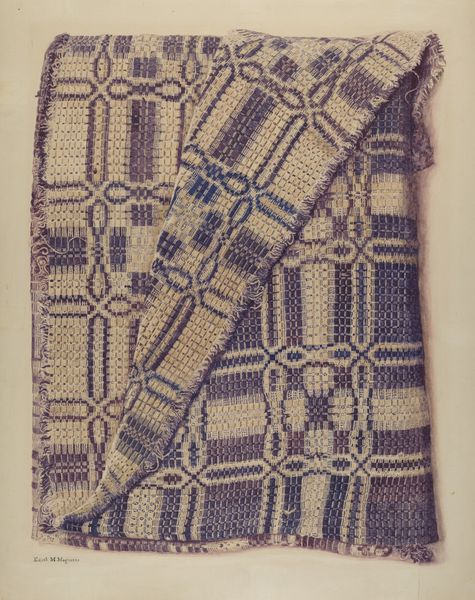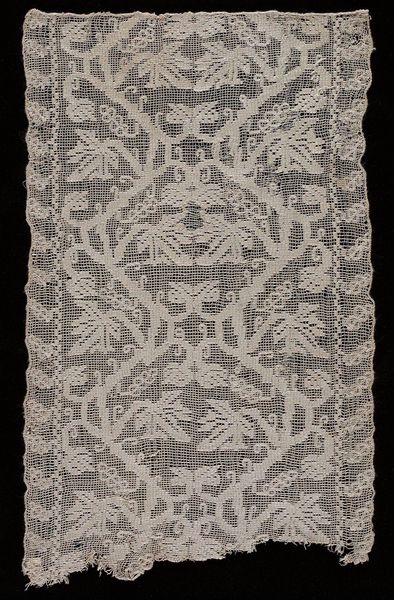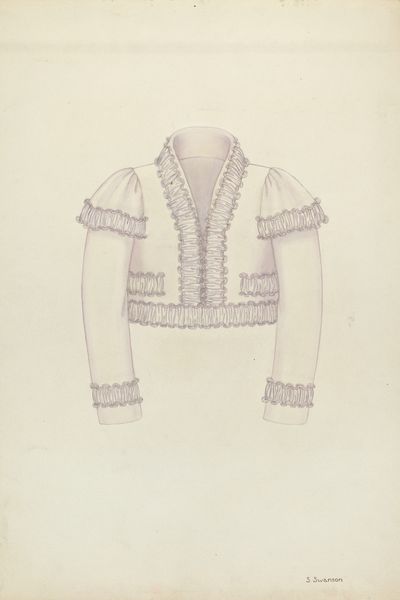
drawing, paper, pencil
#
drawing
#
paper
#
pencil
#
academic-art
#
decorative-art
Dimensions: overall: 30.6 x 23 cm (12 1/16 x 9 1/16 in.) Original IAD Object: 3 1/2" wide; 5 3/4" long
Copyright: National Gallery of Art: CC0 1.0
Curator: We are looking at William Parkinson's drawing, titled "Crochet," made around 1937. It appears to be a rendering in pencil on paper. What's your initial take? Editor: Delicate, yet constrained. There is something so detailed about the depiction, but it feels static. The monochrome palette also enhances its graphic qualities over anything tactile. Curator: Indeed. The intricate linework meticulously replicates the details of the crochet. Consider the strategic arrangement of floral and geometric motifs; this highlights Parkinson’s focus on shape and the surface’s formal elements. Editor: Absolutely, and I find myself immediately wondering about the maker of this lace. The original craft would be intensely manual labour, requiring a specific skill-set now replaced with machines. To see it drawn removes it further from that context. What does that remove tell us? Curator: That is insightful. I think by representing it as a drawing, Parkinson transforms a common functional textile into something meant solely for aesthetic appreciation. This raises a lot of questions about the perceived hierarchy of artistic media. Is he trying to elevate a craft, or just appropriate its form? Editor: Precisely! We see echoes of domestic life abstracted onto the page and consumed for its formal qualities alone. It's also striking how utilitarian it feels, devoid of colour and divorced from the body that this type of material usually adorns. Curator: Yes, there is a palpable tension. The rigid medium and lack of colour clashes with the softness and potential ornamentation of real crochet work. The negative space around the drawn lacework further emphasizes it, turning the subject into an almost scientific specimen, presented for our visual inspection. Editor: I completely agree; it gives one pause about the relationship between the real item, its artistic interpretation and what elements – of material, process and function – are lost or altered in its artistic transmutation. Curator: Reflecting on this artwork, Parkinson provides us with a quiet contemplation of artistry in design. Editor: And it causes us to ponder the labour of the hand versus its mechanized re-creation, and where value truly resides.
Comments
No comments
Be the first to comment and join the conversation on the ultimate creative platform.
